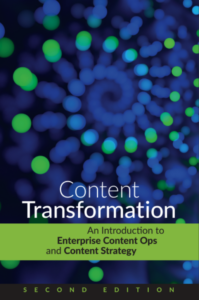Éric Bergeron explains the MadCap acquisition of IXIASOFT (podcast)
In episode 140 of The Content Strategy Experts Podcast, Sarah O’Keefe and Éric Bergeron, president and CEO of IXIASOFT, share the story behind the MadCap acquisition of IXIASOFT.
“The question that everybody is asking, and we really want the answer to, is this seems like a very sensible combination, but MadCap as an organization has done a really excellent job with their marketing, and much of their marketing has been based on the concept that DITA is not something that you need. Flare is happy and easy and safe and wonderful, and DITA is none of those things. So, when you say this is a bit of an odd combination, I think everybody’s looking at, ‘Well, wait a minute, there’s been a lot of DITA bashing over the past 10 years or so.’ What do you do with that?”
—Sarah O’Keefe








